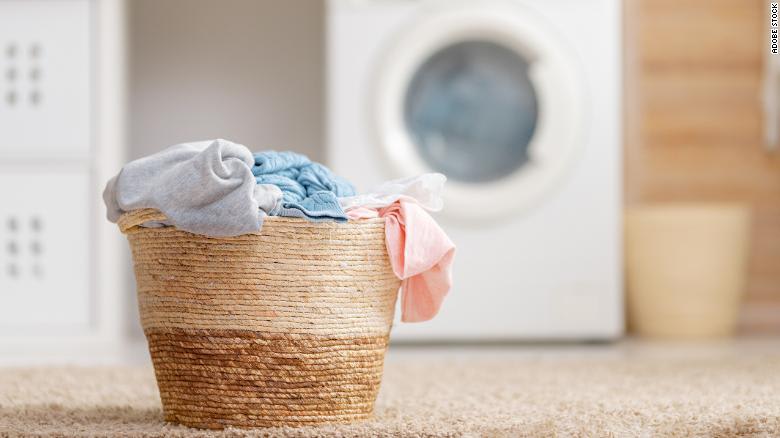دبي، الإمارات العربية المتحدة (CNN) -- لا شيء أجمل من أن يحتضن جسمك منشفة دافئة، طرية، وناعمة بعد الاستحمام.
لكن، بعد الانتهاء من عملية التجفيف، تُصبح المنشفة مبلّلة، وبالتالي تتحول إلى قطعة من القماش مثالية لنمو الجراثيم، لذا يُستحسن تعريضها للهواء حتى تجف. لكنّ ذلك لا يعني أنك حافظت على نظافة المنشفة المرجوّة.
ولهذا السبب، قالت كبيرة المحاضرين في علم الأحياء الدقيقة الطبية في جامعة "وستمنستر" البريطانية منال محمد لـCNN، إنه يجب معرفة عدد المرات التي يجب فيها غسل المناشف لمنعها من نقل الجراثيم إلينا.
أما القاعدة الأساسية وفقًا لمحمد، فتتمثل بـ"اغسل مناشفك مرة واحدة في الحد الأدنى أسبوعيًا".
ولكن، هل بالإمكان استخدام المنشفة مرة ثانية؟ وأجابت محمد أن إعادة استخدام المناشف مرات عدة هو أمر مناصر للبيئة، ولن يشكل مصدر قلق على الأرجح. ولكن، بمجرد انبعاث روائح غير تقليدية منها يُفترض غسلها، لأنّ ذلك مؤشر على نمو الفطريات والبكتيريا عليها.
وأوضحت محمد لـCNN أنّ "المناشف ليست نظيفة كما تظن ويمكنها أن تنقل الجراثيم"، مضيفة أنّه "من المهم جدًّا استخدام المصابين بفيروس كورونا لمناشف خاصة بهم، لأننا لا نعرف الفترة التي يستمر فيها فيروس كورونا حيًّا على المناشف".
كيف تصبح المناشف وكرًا للجراثيم والفطريات؟
وفي كل مرة تستخدم فيها منشفة أو تلمسها، تنتقل جراثيم منك إليها. ولهذا السبب، كانت التوصية بغسل اليدين بالماء والصابون مدة 20 ثانية، سابقة لجائحة كورونا.
وفي هذا الإطار، أشارت محمد إلى أنه "إذا لم تغسل يديك كما يجب لمدة 20 ثانية على الأقل، لا سيّما بعد استخدام المرحاض الممتلئ بالجراثيم، فستنتقل الجراثيم بسهولة إلى المنشفة"، مضيفة أن "غسيل المناشف قد يساهم ايضًا في اتساخها"، ولافتة إلى أنه يجب غسل المناشف على نحو منفصل عن الملابس الداخلية العالية الخطورة، لأنها يرجّح أنها تحتوي على آثار للبراز أو البكتيريا الناجمة عن الالتهابات التناسلية، ما يخفف من نسبة نظافة المناشف التي نطمح إليها. كما لا يجب غسلها مع ثياب متسخة جراء التقيؤ.
وقالت محمد إنه يجب تجفيف المناشف جيدًا بعد الاستخدام، لأن تركها رطبة يشكّل بيئة حاضنة لنمو البكتيريا، مشيرة إلى أن "المناشف المبلّلة في الحمامات الرطبة تشجّع على نمو الميكروبات"، ومحذرة أنه "رغم أن غالبية هذه الجراثيم لا تكون ضارة، إلا أن بعضها، مثل بكتيريا Staphylococcus يمكن أن تتسبب بعدوى ومشاكل صحية، خصوصًا لدى الأشخاص الذين يعانون من تقرحات جلدية أو نقص في المناعة".
ما هي نسبة اتساخ مناشفنا الفعلية؟
وقالت محمد إنّ الفطريات، وضمنًا العامل المسبب لمرض سعفة الساق (حكة اللعب)، تنتقل من خلال استخدام المناشف المشتركة. وتسبب الفطريات الجلدية، مثل تلك التي تصيب قدم الرياضي، التهابات في الجروح أو البشرة الحساسة.
وتابعت أن بعض أنواع العدوى أكثر خطورة، مثل بكتيريا المكورات العنقودية "Staphylococcus" التي تعيش على نحو طبيعي على جلدنا، لكنها في حال وجدت طريقها إلى داخل جسمنا من خلال جرح، فستتسبب بالتهاب مقاوم للمضادات الحيوية.
كما يمكن أن تنشر المناشف بكتيريا مسببة لحب الشباب. وتنصح محمد بتجنب مشاركة المناشف مع الآخرين، لأنها قد تنقل فيروس "العين الفرنفلية" (التهاب الملتحمة)، وخصوصًا أن القماش يلامس الوجه والعينين.
وأشارت محمد إلى أن "المناشف تُوضع في أكثر الأماكن حاضنة للجراثيم في المنزل، المرحاض، لذا لا داعي للاستغراب إذا تطايرت الجراثيم، بعد دفع الماء في الحمام، وحطّت على مناشفنا، ومنها الإشريكية القولونية Escherichia coli (E. coli)".
وأوضحت أن هذه البكتيريا تعيش بشكل طبيعي في جهازنا الهضمي، وترتبط بالبراز، ويمكن أن تتسبّب بالتسمم الغذائي، والتهابات المسالك البولية، لافتة إلى أنه من الضروري غسل مناشف المطبخ بشكل منفصل عن مناشف الحمام، بهدف التقليل من خطر انتشار البكتيريا.
وكانت دراسة وُضعت عام 2014، حول مناشف المطبخ التي جُمعت من خمس مدن رئيسية في الولايات المتحدة الأمريكية وكندا، قد أظهرت أنّ 89٪ منها كانت موطنًا للبكتيريا القولونية، و25٪ تحتضن الإشريكية القولونية.
كيف نحافظ على نظافة المناشف؟
1. لا تشارك منشفتك مع أحد، واستبدل المناشف المشتركة، مثل مناشف اليد، بمنشفة نظيفة يوميًا.
2. اغسل مناشفك على نحو منفصل قدر المستطاع، ولا تضع معها ملابس شديدة الخطورة مثل الملابس الداخلية.
3. استخدم الماء الساخن لغسل المناشف، حتى تضمن القضاء على الجراثيم، بحرارة 60 درجة.
وأشارت محمد إلى أنّه "كلما كان درجة الغسيل أكثر سخونة، كانت النتيجة أفضل". وفي حال كانت المناشف أكثر اتّساخًا، فإنه بالإمكان غسلها على حرارة 90 درجة مئوية، وفي حال استخدام دواء غسيل أساسي، بالإمكان تحديد الحرارة بـ40 درجة مئوية.
4. التأكد من جفاف المناشف تمامًا، بعد الغسيل وقبل أي استخدام لها.
